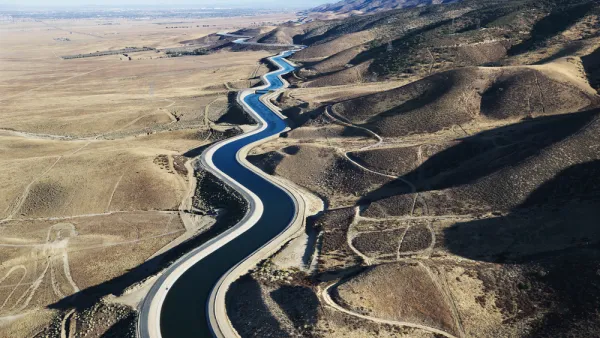Much of the inefficiency surrounding our use and misuse of water derive from entrenched habits formed during previous eras of presumed inexhaustibility of water supplies. Our wastewater treatment approach has traditionally relied on an infrastructure of centralized municipal water plants where tertiary effluent is recycled. These plants consume considerable energy and cost to restore all of the water they process.
Much of the inefficiency surrounding our use and misuse of water derive from entrenched habits formed during previous eras of presumed inexhaustibility of water supplies. Our wastewater treatment approach has traditionally relied on an infrastructure of centralized municipal water plants where tertiary effluent is recycled. These plants consume considerable energy and cost to restore all of the water they process.
This habitual approach to managing water warrants more thoughtful strategies. These could include selectively treating wastewater to different levels of purity based on the varying levels of water purity for specific purposes rather than defaulting to the established approach of one-size-fits-all centralized wastewater treatment.
One emerging strategy of leveraging the efficiency of wastewater treatment is the application of the value park concept. Borrowing from the symbiotic relationship between petrochemical operations and the need for high volume, low cost manufacturing, value parks have become the norm by clustering around the edges of refineries and tank farms in a unified manner to use tertiary chemicals and byproducts to produce everyday household consumer products such as plastics and cosmetics. This consolidation of activity and energy reduces carbon impact of the manufacturing process and uses byproducts that normally would go to waste.
Expanding on the concept, a ‘wastewater value park' envisions a micro-economy of water-dependent business clustered in many urban environments, including local nurseries, small industrial parts manufacturers (aviation, auto) and select processing plants that require less pure water for a variety of purposes from cooling to plating. By integrating our wastewater treatments plants as a catalyst for urban redevelopment, economic opportunity, job creation and environmental stewardship can emerge.
Instead of viewing wastewater treatment plants as isolated facilities, we should look forward to the day when more communities will proudly regard such places as integrators of advanced water technology that helps fulfill the as many goals as possible to change the way cities are built the future.

Analysis: Cybertruck Fatality Rate Far Exceeds That of Ford Pinto
The Tesla Cybertruck was recalled seven times last year.

National Parks Layoffs Will Cause Communities to Lose Billions
Thousands of essential park workers were laid off this week, just before the busy spring break season.

Retro-silient?: America’s First “Eco-burb,” The Woodlands Turns 50
A master-planned community north of Houston offers lessons on green infrastructure and resilient design, but falls short of its founder’s lofty affordability and walkability goals.

Test News Post 1
This is a summary

Analysis: Cybertruck Fatality Rate Far Exceeds That of Ford Pinto
The Tesla Cybertruck was recalled seven times last year.

Test News Headline 46
Test for the image on the front page.
Urban Design for Planners 1: Software Tools
This six-course series explores essential urban design concepts using open source software and equips planners with the tools they need to participate fully in the urban design process.
Planning for Universal Design
Learn the tools for implementing Universal Design in planning regulations.
EMC Planning Group, Inc.
Planetizen
Planetizen
Mpact (formerly Rail~Volution)
Great Falls Development Authority, Inc.
HUDs Office of Policy Development and Research
NYU Wagner Graduate School of Public Service


























